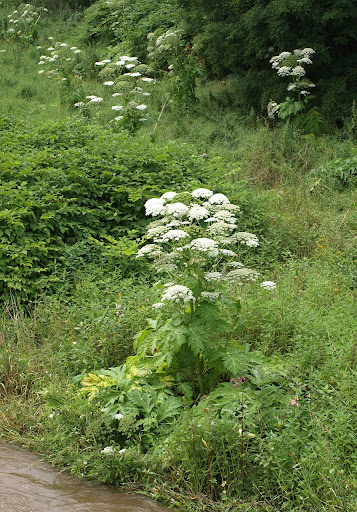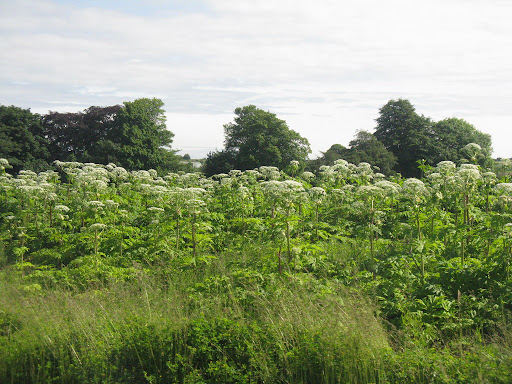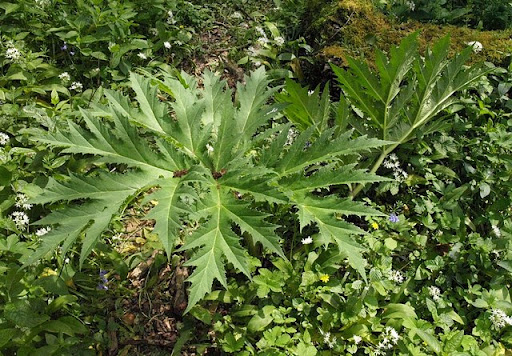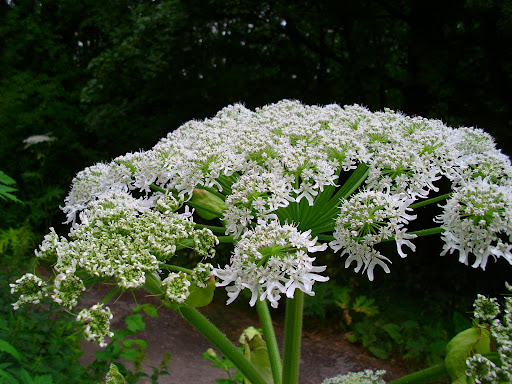A perennial member of the carrot family which can grow to exceed 5m in height. Basal leaves lobed, coarsely toothed, reaching 3m in length, glabrous on the upper surface and bristled on the lower surface. After 3-5 years as a vegetative rosette, produces a massive flowering stalk which is rigid, hollow, blotched with purple, bristled and up to 10 cm in diameter. Large compound umbel inflorescence (up to 80 cm) with of rays of 50-150 pinkish -white flowers approximately 24 mm in diameter. Blooms late June to August. The roots of this plant are yellow and branching. Typically produces 50,000 elliptical flat seeds between 6-18mm long.
Disturbed areas, riverbanks and roadways. Especially suited to damp riparian areas. The winged seeds are well adapted for dispersal by wind (up to 10 m) and water (seeds can float for 3 days). The immense size and fast growth of this invasive can lead to the shading out of native species. Giant Hogweed increases the risk of erosion around waterways when it dies back in the winter and at the end of its life cycle. The watery sap contains chemicals which when activated by the sun’s UV rays can cause severe burns in humans and other animals.
Was first introduced by French settlers in 1600’s or 1700’s.

Aenean malesuada neque sapien, id auctor leo vestibulum sit amet. Nullam dignissim luctus justo vitae pulvinar. Ut egestas porta mauris vulputate tempus. Aenean mattis urna in arcu viverra sollicitudin. Duis risus mi, mattis eget placerat vel, finibus ut sapien. Maecenas scelerisque lacus eget neque laoreet, in semper dolor rutrum.
Giant size compared to other Hogweeds. Purple prickly stems with white hairs, flowers, leaf and leaf size.




The first known record of Giant hogweed in the Maritimes was in Alexander Graham Bell’s garden in Baddeck.
Promote the use of beautiful, native plants. If found on private property It is not recommended to touch or attempt the removal of this invasive. Instead take clear photos for identification purposes and report sightings to: iNaturalist or directly to the NSISC. It is recommended to hire professional landscaper familiar with the appropriate safety protocols. It is very important to never burn or compost this plant and instead double bag in in heavy duty plastic and let it rot in the sun before discarding.
Join our mailing list.